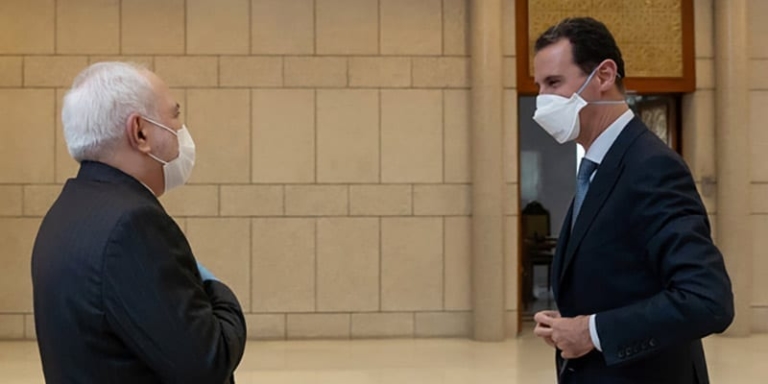
On March 11, Syria entered its tenth year of civil war, one that has invited outside intervention and created one of the world’s worst humanitarian disasters. The result has been the death of hundreds of thousands of civilians, the displacement of millions of others, and the physical destruction of the country. But this inglorious anniversary comes as Syria confronts the spread of the coronavirus that, due to the devastation of the country’s health system, is likely to affect many thousands of people and exacerbate the ongoing social and economic problems afflicting Syrian society.
Like other authoritarian regimes, such as those in China, North Korea, and Egypt, the government in Syria was late in acknowledging the COVID-19 infections in the country. Damascus announced its first case of infection on March 22, a few days after the United Nations’ Under-Secretary-General for Political and Peacebuilding Affairs, Rosemary A. DiCarlo, cautioned of a devastating impact of the disease on Syria, especially its northwestern Idlib province. As of April 22, the number of reported infections in Syria rose to 42, with three deaths.
Admitting There Is a Problem
Syria’s authoritarian regime adopted a three-stage approach to the pandemic: 1) denying the existence of infections until the government devised a plan to address COVID-19; 2) waiting for the availability of international assistance to deal with the pandemic; and 3) acknowledging the infections and announcing a plan that adopts international standards. What necessitated this approach in Syria was the current state of devastation that the country’s health sector has sustained since 2011, mostly because of direct regime and Russian attacks on health facilities that have killed civilians and health-care workers across the country.
The reason for the regime’s initial reluctance to admit to the spread of infections likely was to avoid upsetting Iran, which has been profoundly impacted by the virus.
The reason for the regime’s initial reluctance to admit to the spread of infections likely was to avoid upsetting Iran, which has been profoundly impacted by the virus. By April 22, Iran had reported some 86,000 cases of infection and 5,400 deaths. In fact, Syria denied that Iranian pilgrims and fighters brought the virus to the country. Nevertheless, some Syrian health-care workers in Damascus reported that Shia fighters helping the regime brought the virus into the country.
The admission that it had a serious problem with COVID-19 came after the regime realized that it could use the pandemic both to ease the sanctions it has faced during the years of the war and to get relief funds to help Syria’s health sector. The regime also wanted to exploit the March 23 appeal by United Nations Secretary-General António Guterres for a worldwide cease-fire to enable the international community to address the pandemic. UN envoy to Syria Geir Pedersen also issued his own appealfor a cease-fire to protect civilians and allow widespread treatment and mitigation.
Can Syria Contain Its Coronavirus Problem?
With the collapse of Syria’s health-care system and the destruction of its facilities, it is hard to assess how the country could stem the spread of COVID-19. As things stand today, the Syrian regime controls many areas. However, in the northeast, a self-declared civil administration is operated by the Kurdish People’s Protection Units that are supported by a contingent of American troops. In the northwest, the armed Syrian opposition controls Idlib province and parts of Aleppo province, supported by Turkey. Thus far, neither of these areas have reported any infections. It can safely be assumed that there are unreported cases because of the lack of testing and monitoring, since the World Health Organization has been able to send testing kits only to the regime in Damascus—the reported cases are only from regime-controlled areas of the country.
The best method of addressing the spread of the coronavirus in Syria, both in regime-controlled areas and those outside of it, is to involve civil society organizations that could mount the necessary campaign of educating Syrians about yet another calamity that could befall them.
What has become clear is that in the absence of widespread testing for cases of infection and of a vaccine, the practices of social distancing, isolation, and personal hygiene and protection are the most effective methods of COVID-19 control. What is necessary is a far-reaching education campaign to warn against potential infections, a plan that requires full government control and the proper functioning of institutions. This is lacking in the Syrian case; indeed, the central government appears to be interested only in controlling the discourse about the disease. To be sure, the best method of addressing the spread of the coronavirus in Syria, both in regime-controlled areas and those outside of it, is to involve civil society organizations that could mount the necessary campaign of educating Syrians about yet another calamity that could befall them.

